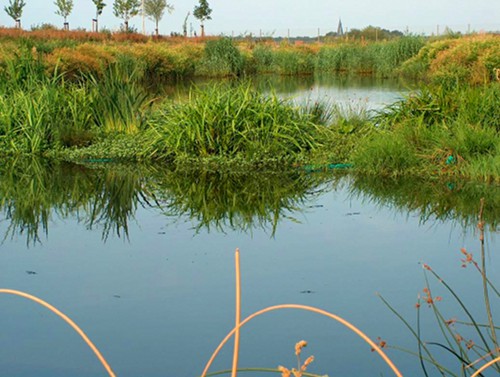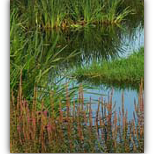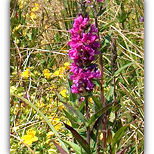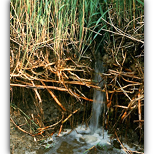Floating islands
Artificial and natural floating islands are characterized by buoyant dense mats of roots and rhizomes of marsh plants (helophytes). We use floating islands (floating rafts) in our treatment wetland projects for the removal of pollutants in water bodies and for different other purposes alongside with constructed wetlands since nearly 25 years.Common genera of marsh plants (emergent aquatic macrophytes) forming floating islands are Phragmites, Typha, Phalaris, Glyceria, Cyperus, Eichhornia among others, which have air filled aerenchyma tissues. In tropical regions like South-Vietnam we tested different species like Persicaria, Neptunia, Ipomoea, Limnocharis, Hydrocotyle, Cyperus, Colocasia successfully, even under conditions of high strength industrial wastewater (starch production) in a pretreatment pond.
In most applications we use a special textile plant carrier as a platform structure to support the buoyancy of the wetland plants (helophytes).

The plant roots growing in the water take up nutrients and provide large surfaces on their root and rhizome mats for active biofilms (microbes improving water quality). By shading the water surface floating root mats suppress the proliferation of algae. Floating rafts provide wildlife habitats for waterfowl above the water surface and breeding areas for young fishes in the network of roots and rhizomes below (submerged).








